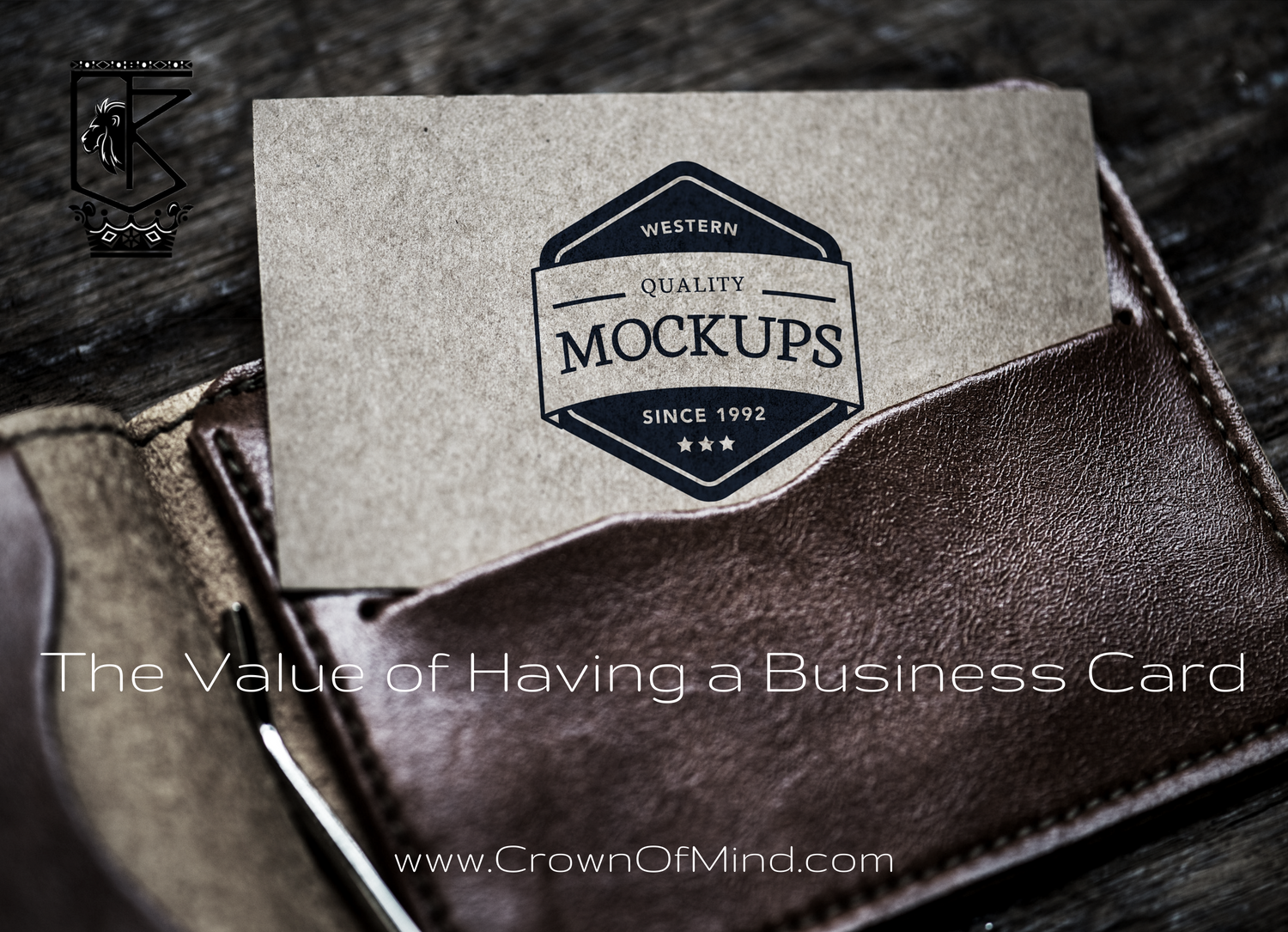The business card is one of the most common resources for professionals and non-professional interests alike.
I remember experimenting with a number of card designs during undergrad. I’d go to Vistaprint and toy with the options. Choosing different titles, seeing which resonated most. With a large stock available and card case, I’d pass them out on campus wherever I went that seemed it warranted. Overall I might’ve created up to eight different card designs in college.
The experience was valuable practice, and alerted me to the importance of this very simple item.
Our classic communication mediums are being digitized. I see this not as a negative but just another option for what we would have physically. When it comes to cards though, I still observe their value as a physical item.
Note: I did experiment with “digital” cards as well, using Moo’s now-obsolete app called Monogram. It was a creative way to design a brief that people could access remotely with a link or you could text it to people for view. Moo removed the platform entirely. On their website, their response is, “With regret, we’ve made the decision to remove Monogram from the App Store and close all created Monograms. We’ve already disabled Monogram in the App Store and on 10th January 2018 we’ll close all subscriber accounts and remove all online Monogram content.” – link
This was a public sign to me that the app wasn’t doing well, no longer worth the investment. It also provided further evidence of my own observations; people don’t care for digital cards. I recognize this is so for a few reasons. One, attention spans are shorter. People will view a blog, read an E-mail or go to a website if they have an energetic relationship to the creator or the content. Digital cards don’t seem to factor in this. From my observation, a digital card is just another “thing” to download or look at, and people generally still prefer to receive a card in hand.
A Few Reasons for the Value of the Business Card
The card represents creativity. A digital card can look appealing but there’s a particular type of range we execute when producing a physical version. The layout, text, font choices, feel, diction, how all of the information is placed on that card serves as a small representation of our own unique energy. The card speaks for us when we’re not around.
The card is non-digital reliance. The moment you decide to digitize something you’re now subject to what it relies on to work. The object no longer exists independently; it’s subject to charging, WiFi influence, the need for an Internet connection, someone paying the Internet bill, etc. When your phone battery power dies, or something happens to your device, you lose all of the resources on that phone and your card along with it.
The card is encapsulated info. It’s small yet capable of quickly giving people the information they need to know to reach you. Website, number, E-mail, titles, tags they can carry in their pocket (and also not subject to have to go on their phone just to know how to contact you). Done.
The card is a metaphysical symbol. Referring back to creativity, that symbol represents you in a condensed form. Any creation we manifest becomes an externalized version of us, based on the level of consciousness at that time. Example – this blog post is an external manifestation of my level of consciousness at this time. By reading this post, you are reading a symbol of me and my thoughts in this moment.
The card doesn’t have to be paper. If there really is a resistance to making a card out of paper, there are other options. Moo now has cotton card paper for those who want to maintain certain standards regarding their paper usage.
The card can be exchanged with another. When you give someone your card, it’s an opportunity to receive theirs. If they don’t have one, some other form of contact information. This exchange can be brief but make no mistake that it’s valuable. Appreciate the exchange; someone is giving confirmation that they are open to being contacted by you and further engage in whatever dialogue or endeavor your contact began with. Exchanging cards represents an opportunity.
The card doesn’t have to be a traditional “card.” There are many sizes the card can be. It can be a bookmark. It can be a flyer. It can be thin or extra small. What makes the card a “card” is the information and context it is shared. The point is we want to have the capacity to give someone our information at the right time in a dynamic form that represents us.
The card is still asked for in professional conversations. I’ve been at this for some time and can say the physical card remains the top ask regarding contact info. People don’t ask me to just give them a phone number, or an E-mail. Or write my info down on a piece of paper. They ask, “Do you have a card?” On occasion I’ve been asked for the Instagram, but the card is still dominant.
Choose your card source and begin creating. Order a case to house them in and carry your professional-metaphysical symbols wherever you travel.






